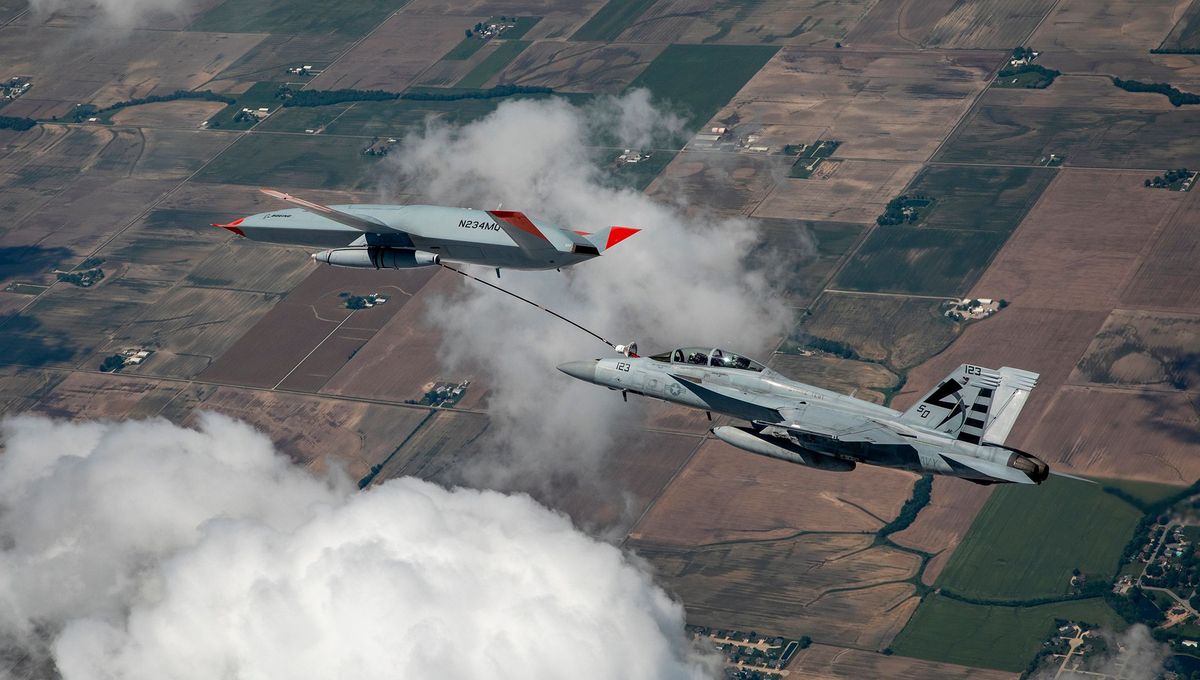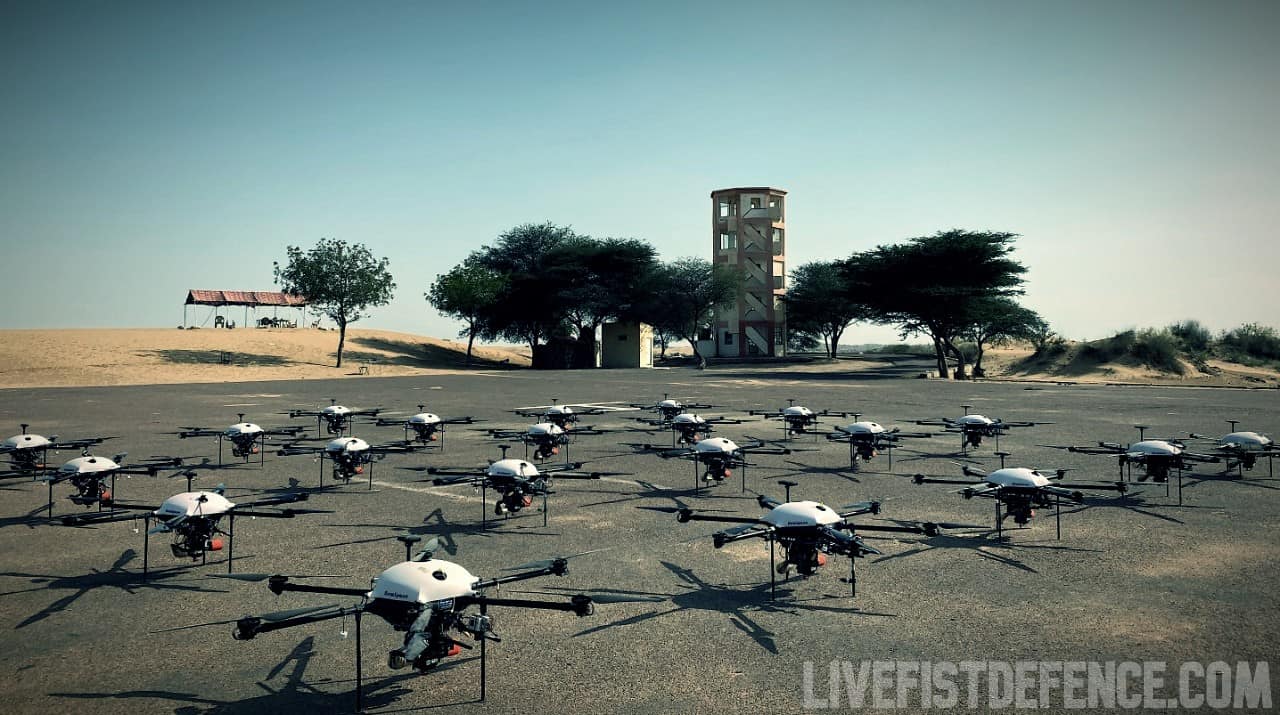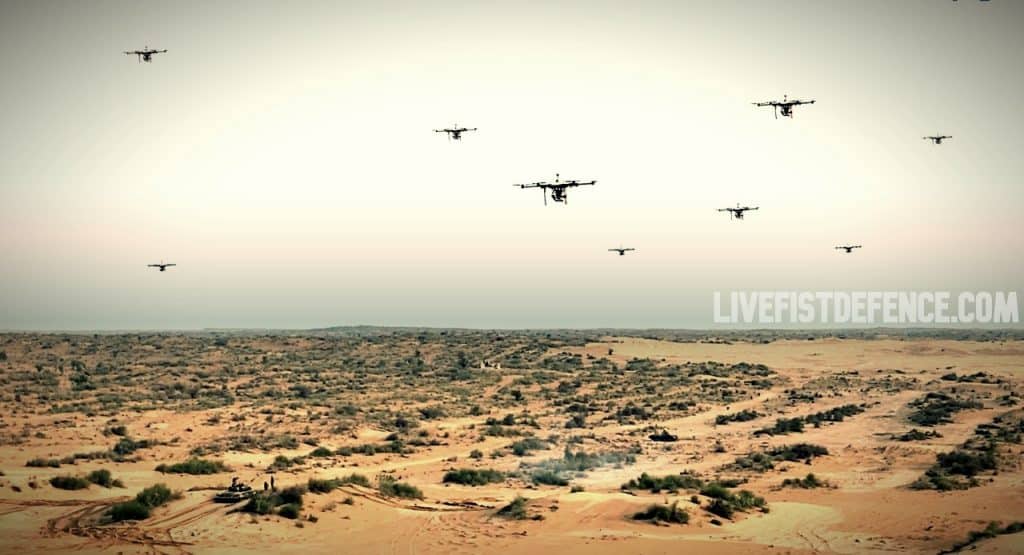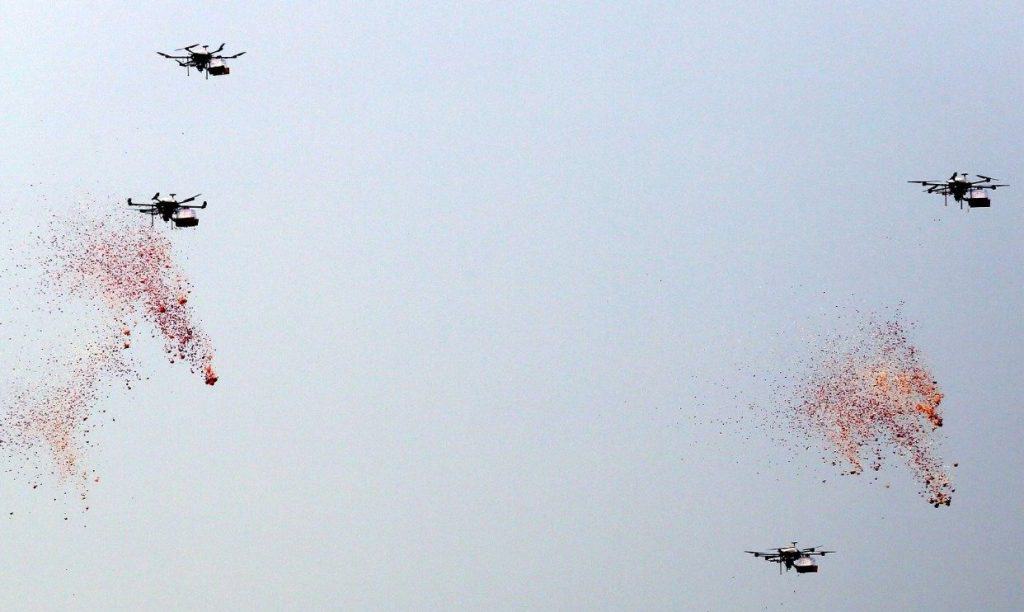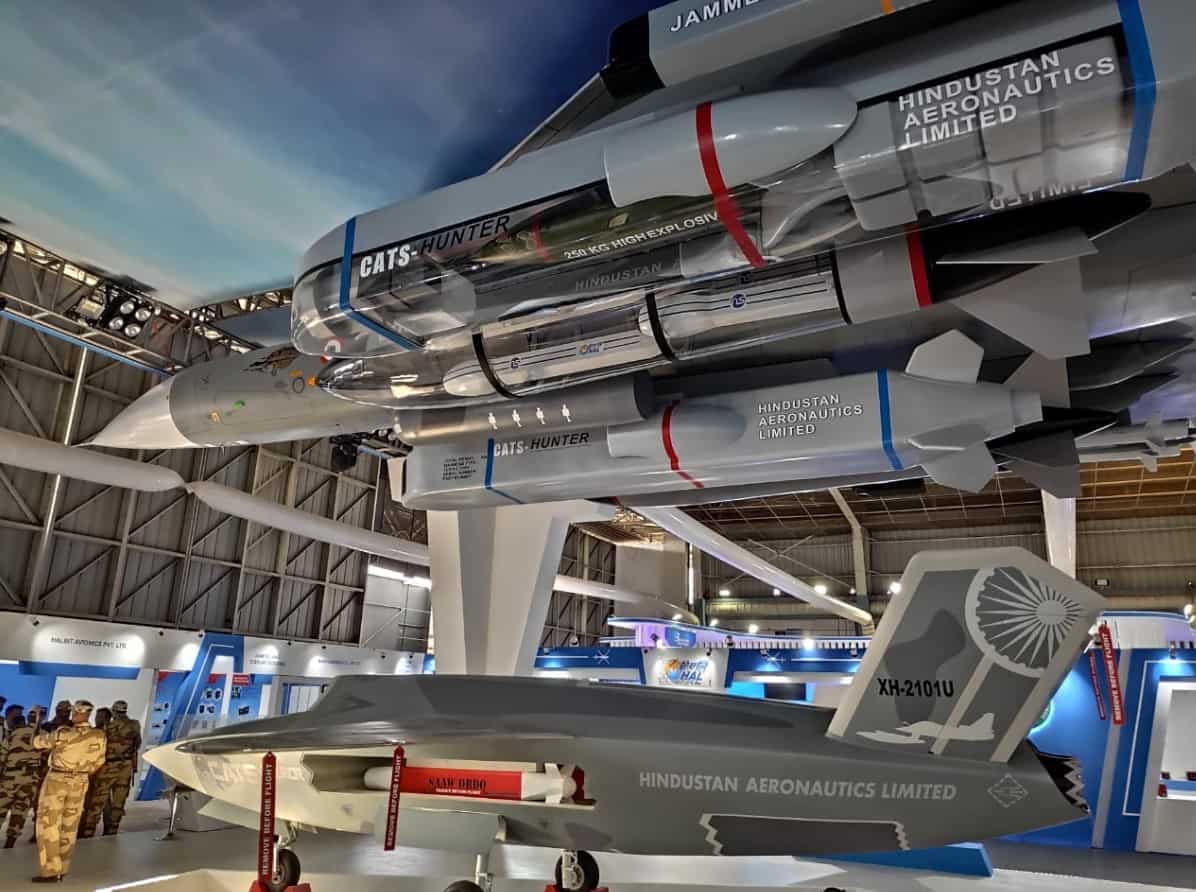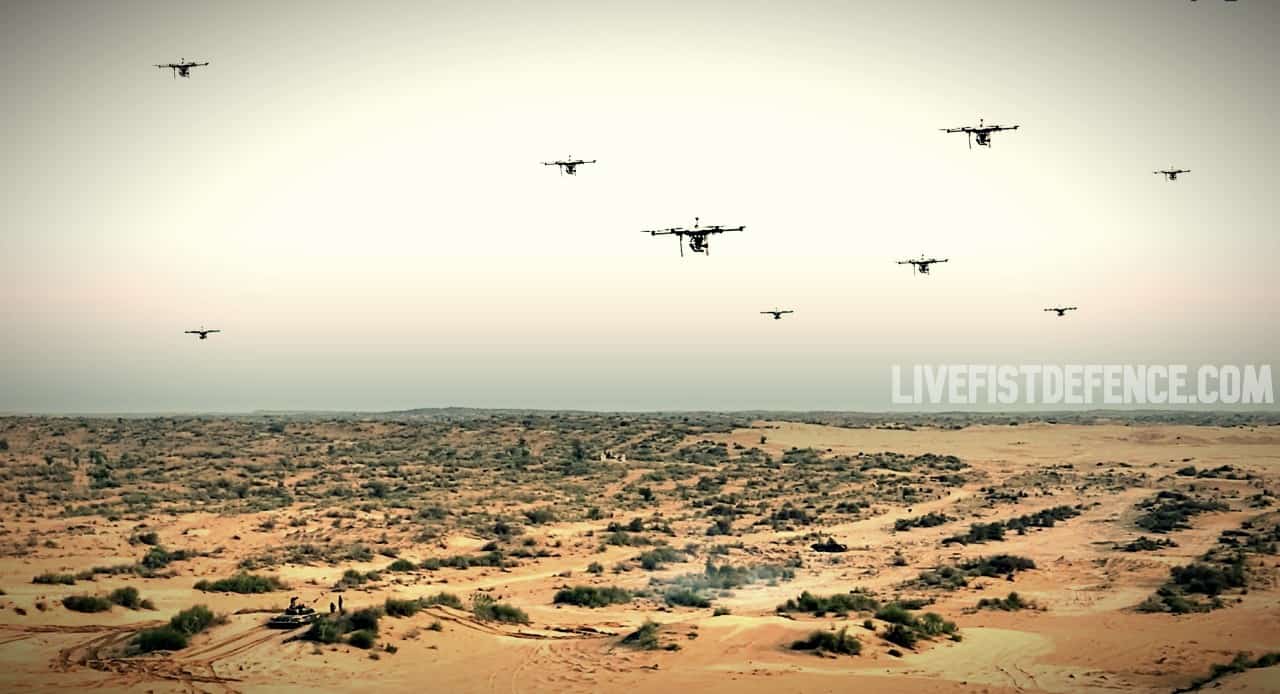General Atomics drones are gaining the ability to launch unmanned aircraft in mid-air, new self-defense options, and other advanced capabilities.
By Joseph Trevithick
May 21, 2021
General Atomics has revealed a new small drone design that can be launched in mid-air from
the MQ-9 Reaper, the company's flagship product, as well as its
MQ-1C Gray Eagle. The disclosure of this unmanned aircraft, the name of which has not been released, but that is in development now, is part of a larger vision for how the MQ-9 and MQ-1C could be employed in the future, including in support of higher-end conflicts. In addition to acting as
unmanned motherships for smaller drones, there are also efforts underway to improve their self-defense capabilities and expand their mission sets.
General Atomics' Aeronautical Systems, Inc. division, or GA-ASI, released concept art, seen above and below, featuring the unnamed drone along with other materials it provided as part of the 2021 Special Operations Forces Industry Conference (SOFIC), which began on Monday and wraps up today. This annual event is being hosted virtually for the second year in a row due to the ongoing COVID-19 pandemic.
GA-ASI
An artist's conception of an MQ-1C Gray Eagle carrying, among other things, a previously undisclosed smaller unmanned aircraft capable of being launched in mid-air.
"This rendering represents the first public look at one of our new, unannounced prototypes, which has been in development for some time and is really a remarkable addition to the product line," C. Mark Brinkley, the Director of Strategic Communications & Marketing at GA-ASI, told
The War Zone. "As a whole, our sUAS/ALE family of systems presents a great opportunity to extend the capabilities of the MQ-9 and MQ-1C for the future fight."
Though he could not provide detailed specifics about the drone, Brinkley said that it was one component of "a family of small UAS," or unmanned aircraft systems, which also includes Sparrowhawk and General Atomics' entry into the Defense Advanced Research Projects Agency's (DARPA) LongShot program. Sparrowhawk is another small drone designed to be launched
and recovered in mid-air, which you can read more about
here. LongShot is exploring concepts for air-launched unmanned systems armed with air-to-air weapons that could extend the reach of the platform employing them, something you can read more about
here.
GA-ASI
General Atomics's Sparrowhawk, which is designed to be both launched and recovered in mid-air, seen under the wing of an MQ-9.
From what we can see in the artwork, the newly unveiled small drone design has a front-mounted propeller, pop-out wings, and a v-tail, and also appears to have some low observable (stealthy) features. Its general form and function do appear similar to Sparrowhawk, which also has a v-tail, but has a different pop-out wing configuration and propulsion system.
GA-ASI
Close-up looks at the newly unveiled General Atomics small UAS design as seen in the concept art released for SOFIC.
The MQ-1C artwork also shows that drone flying together with a pair of Area-I Agile-Launch Tactically Integrated Unmanned System (ALTIUS) 600 drones. GA-ASI has already demonstrated the ability of the Gray Eagle to launch
the ALTIUS-600 in flight and the U.S. Army has been actively using these drones as part of work on its
Air Launch Effects (ALE) program. Brinkley said that the family of General Atomics drones that includes the newly revealed design is also "sometimes known as air-launched effects."
The goal of the ALE program is to develop a family of smaller drones that can be launched from larger manned or unmanned aircraft and that are capable of working together as networked swarms to perform various missions, including intelligence, surveillance, and reconnaissance (ISR), electronic attack, and even lethal strikes. You can read more about the ALE effort
here. The Army has also been using the ALTIUS-600 to explore the potential for deploying ALE systems from the ground and the U.S. Air Force has also air-launched at least one of these drones from an
XQ-58A Valkyrie's internal payload bay.
US Army
US Army personnel launch an ALTIUS-600 from a DAGOR ultra-light vehicle during an exercise.
"Army Futures Command (AFC) has identified a future fight in an Integrated Air Defense Systems (IADS)-rich environment where platforms must be survivable, attritable, or expendable to deliver sensing capabilities effectively where 1) The MQ-1C Gray Eagle flies racetrack patterns tangential to the IADS threat, at 80 km [~50 miles] distance, 2a) ALEs deploy from the MQ-1C Gray Eagle as the forward most element of the advanced team in areas of expected enemy contact in order to detect, identity, location and report (DILR) and attack/disrupt/decoy threat assets to initiate disintegration of the IADS," according to an official 2020 Army contracting notice. The word "attritable" that is used here refers to platforms that, while not explicitly expendable, are low-cost enough where they could be employed in areas where it would otherwise be less palatable sending more expensive 'exquisite' designs.
The concept of operation General Atomics envisions for employing the unnamed smaller UAS from the MQ-9 is very similar to these stated plans from the Army. "Our larger aircraft can transport these small UAS systems thousands of miles into the operational area, and provide the long-range sensors needed to identify potential targets of opportunity," Brinkley explained.
"Once identified, the small UAS can swoop in for a closer look, provide positive ID, and then track hostile actors," he continued. "That data is passed back to the MQ-9 or MQ-1C, which has the robust communications suite necessary to transmit that data anywhere in the world where the information is needed. As a team, the large/small UAS combo will be a key element for targeting, intelligence, reconnaissance, and networking across the future combat spectrum."
GA-ASI has also made clear that it sees MQ-9s and MQ-1Cs deploying smaller drones as key to how those platforms will able to support operations in more contested environments during future higher-end conflicts, just like the Army does. The Reaper and the Gray Eagle were designed originally more with operations in permissive airspace in mind and have been
shown to be vulnerable even to
lower-tier air defense capabilities.
"By employing these smaller UAS, Reaper and Gray Eagle operators will be able to penetrate, disintegrate and exploit anti-access and area denial (A2/AD) air defenses, and support operations in any domain," Brinkley added, though, of course, any such penetration would be indirect. "Meanwhile, the greater standoff afforded by these smaller UAS increases the survivability of the larger aircraft by placing them outside the kinetic range of tactical surface-to-air missiles."
These small drones are just one of a number of efforts to reduce the vulnerability of the Reapers and Gray Eagles, as well as give them additional mission sets, to help ensure their relevance going forward. The concept art of the MQ-1C carrying one of the newly disclosed UASs also shows that aircraft equipped with a new self-protection pod that GA-ASI has been working. The company
had announced in January that it had finished a flight test demonstration of this system, which it had developed under a
Cooperative Research and Development Agreement (CRADA) with SOCOM, on the MQ-9.
The pod has built-in radar warning receivers, as well as an AN/AAQ-45
Distributed Aperture Infrared Countermeasure (DAIRCM) system. The AN/AAQ-45 uses an array of electro-optical and infrared sensors to detect and track incoming missiles, and can then employ a laser against threats that employ infrared seekers to blind and confuse them, throwing them off course. The podded self-defense system also has a countermeasures dispenser that can release
decoy flares,
chaff, and the BriteCloud expandable radio-frequency decoy. That latter countermeasure, which you can read more about
here, is used to lure away radar-guided missiles.
As part of the materials it provided for SOFIC, GA-ASI also released artwork depicting an MQ-9 equipped with the self-defense pod, as well as an
AIM-9X Sidewinder missile. The U.S. Air Force has been exploring arming its Reapers with these air-to-air weapons for self-defense and potentially other roles, including
knocking down incoming cruise missiles.
GA-ASI
An artist's conception of an MQ-9 Reaper equipped with the self-defense pod and armed with an AIM-9X Sidewinder missile, as well as other weapons and stores.
The concept art of the MQ-9 launching two of the smaller UASs also shows that Reaper fitted with a Scalable Open Architecture Reconnaissance (SOAR) pod under its right wing and a Rosetta Echo Advanced Payload (REAP) under its left wing, both of which are also GA-ASI products. SOAR is a signals intelligence suite that "provides identification, geolocation and characterization of RF Signals of Interest (SOI) for the formation of Electronic Order of Battle,"
according to General Atomics' website. REAP is a communications and data-sharing system.
GA-ASI
An infographic showing various payloads General Atomics has or is developing for the MQ-9, including the SOAR and REAP pods.
REAP underscores another potential future role for the MQ-9, as a communications and datalink gateway node. GA-ASI says that this pod "provides the foundation for an Open Mission Systems (OMS) capable communications gateway (ABMS building block)." An open-architecture system is one designed to be readily adaptable and upgradeable to give existing systems additional functionality and enable all-new capabilities. ABMS is the U.S. Air Force's
Advanced Battle Management System program, which is a broad initiative exploring a wide array of new technology to improve
networking and associated capabilities, with a heavy emphasis on leveraging
artificial intelligence and machine learning.
The REAP pod is also notably one of three pods that the Air National Guard is now exploring as part of a large upgrade package, referred to as Ghost Reaper, for its MQ-9s. General Atomics first unveiled
the Ghost Reaper concept in 2020. A Reaper from the 174th Attack Wing, an element of the New York Air National Guard, flew with a
set of Ghost Reaper pods during the recent iteration of the
annual Northern Edge exercise in Alaska.
The other two pods that are part of this configuration are a Centerline Avionics Bay Pod, which provides an expansion area where various additional systems can be installed, and Northrop Grumman's Freedom Pod. The Freedom Pod contains the advanced
Freedom 550 software-defined radio, which, depending on its exact configuration, has the power to translate between a wide array of different and otherwise incompatible waveforms, as well as sport an
infrared search and track (IRST) system.
USAF
An MQ-9 Reaper assigned to the New York Air National Guard's 174th Attack Wing with, from left to right, an Agile Pod configured as a surrogate for the REAP pod, the Centerline Avionics Bay Pod, and the Freedom Pod.
Between REAP and the Freedom 550, the Ghost Reaper concept could turn the MQ-9 into a powerful data-fusion node, able to collect information from various sources, including its own onboard sensors and ISR data collected by drones it has launched, and then help push it out to other aircraft, as well as friendly forces down below. The Air Force
has said specifically that these pods will allow Reapers "to receive and pass information to and from older fourth generation and newer fifth-generation aircraft," a
major area of interest for the service for years now.
"REAP bridged surveillance imagery video from a Coyote unmanned aircraft system (UAS) to ground command-and-control assets," according to a story
from Aviation Week last September. "Follow-on versions of REAP include Link 16 integration, providing low-latency tactical data link information to military personnel in the air and on the ground. This new capability would allow the Joint Terminal Attack Controller to designate an attack aircraft to hit a target."
Raytheon's
Coyote family of small drones is another design that is increasingly popular within the U.S. military, as a whole. Coyote variants have been employed in a number of research and development efforts regarding swarming technology over the years,
especially within the U.S. Navy, and the Block 3 design is now being employed in a new round of work in this vein, which you can read more about
here.
On top of all that, the Freedom Pod's IRST would offer a way to passively watch for aerial threats, either to the drone itself or an other assets it might working with, even stealthy aircraft or missiles, and in environments where there is significant electronic jamming.
GA-ASI
General Atomics has also flight tested its Avenger drone with a Lockheed Martin Legion Pod equipped with an infrared search and track (IRST) system, as seen here.
All of this comes as the future of the MQ-9, in particular, is increasingly uncertain. Last year, the Air Force announced, unexpectedly, its desire to
stop buying any additional Reapers, citing how vulnerable they would be in a higher-end conflict. The service then initiated a replacement program for these drones, known as MQ-Next, which you read more about
here.
Congress blocked those plans by
inserting funding for additional Reapers in a defense spending bill that became law in January despite a veto from then-President Donald Trump. However, the Air Force continues to make clear that it is working to
move beyond the MQ-9.
General Atomics is also now pitching the MQ-9
as an alternative option to SOCOM's
Armed Overwatch effort. The Armed Overwatch program is looking to acquire an armed manned aircraft of some kind to replace Air Force Special Operations Command's
U-28A Draco fleet. SOCOM envisions the Armed Overwatch aircraft operating primarily in more permissive environments in support of lower-end conflicts.
Of course, any future replacement for the Air Force's MQ-9s, as well as the Army's MQ-1Cs, is likely still years away from entering widespread service, meaning that Reapers and Gray Eagles could very much benefit from upgrades and add-on capabilities that could make them more relevant in higher-end conflicts in the near term. General Atomics says that it hopes that the smaller air-launched UAS it revealed this week at SOFIC will fly for the first time in 2022.
Brinkley, GA-ASI's Director of Strategic Communications & Marketing, stressed that the development of many of these new capabilities, including work on Sparrowhawk and the launching of ALEs from Army Gray Eagles, has already progressed to a significant degree. "We’re not talking about some distant future here. It’s not 'Star Trek.'" he said.
As such, other existing and future operators of the Reaper, or
other variants and
derivatives of that design, could also be interested in these new capabilities for their drones. This operator base
is now notably growing thanks
to changes last year in the U.S. government's restrictions on exporting unmanned aircraft.
All told, the coming evolution of the capabilities of both the MQ-9 and MQ-1C within the U.S. military, especially their increasing ability to launch smaller unmanned aircraft, potentially in networked swarms, looks set to be full of exciting new developments in the coming years, if not months.
Contact the author: [email protected]


